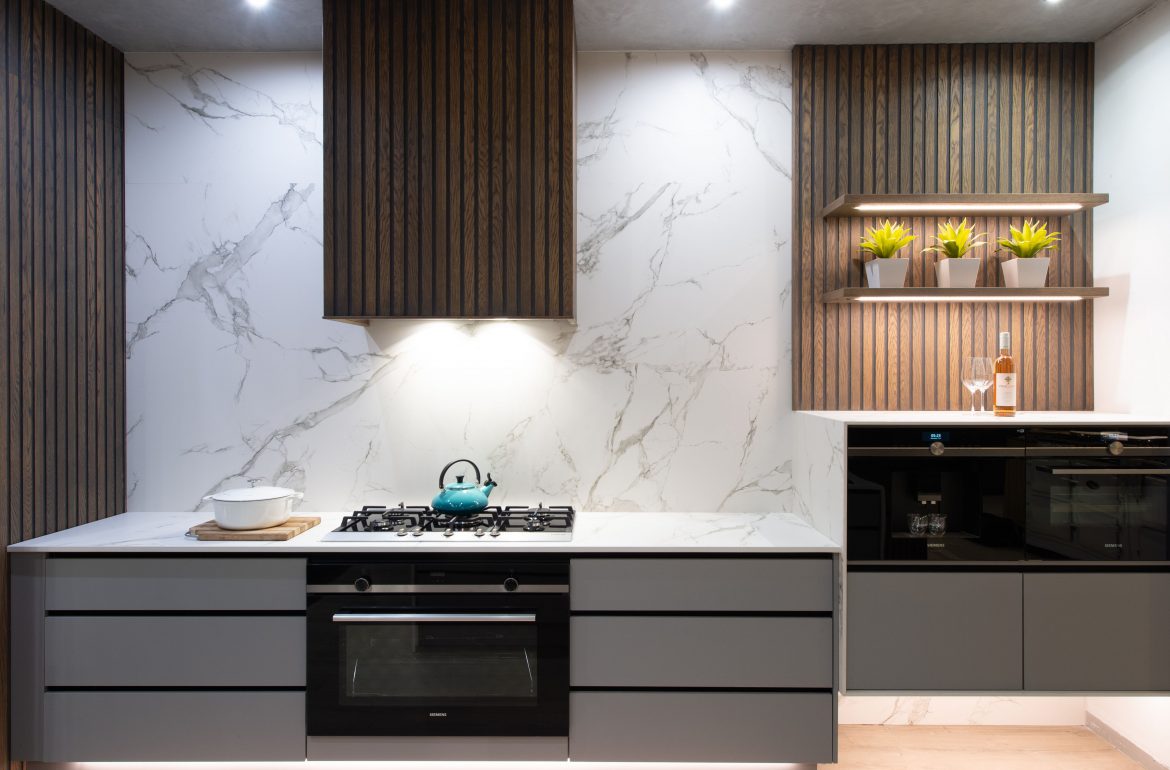Matt surfaces continue to grow in popularity. They can be seen everywhere from nail polish to car wraps, cabinet handles, countertops, appliances, and, of course, cabinetry in living and working areas.
“If we look at what’s driving the matt trend, it’s important to remember that trends in design are often expressions of society, a way of identifying and unifying,” says Jason Wells, Brand and Marketing Manager at PG Bison, manufacturer of decorative wood-based products. “They can be a result of the goings-on in our lives, using available contemporary technologies, to express where we are. Matt speaks to where we are now.
A world of touch screens and other interactive surfaces has driven the development in technologies to improve those interactions, making matt more readily available. But with a growing “always-on” lifestyle, people begin searching to regain some sense of balance. That speaks to calm, subdued living and working spaces, assisted by the low reflective properties of matt.
“Matt-finish cabinetry, with its sophisticated look, is a trend that keeps growing,” says Wells. “Matt finishes are not that new, but the technology behind matt surfaces has seen recent developments to improve performance characteristics.
Previously, attempts at creating a matt finish often resulted in a chalky or dull finish (like a blackboard). In some contexts, this detracted from the envisioned design. However, advances in technology have meant that the matt-look now available is more consistent and sophisticated. These developments have also assisted in producing more durable surfaces, so that marks are less of an issue.
Matt textures in the home
Beyond product developments, there is a trend towards embracing matt for its experiential attributes. “Matt surfaces don’t reflect light in the uniform way high-gloss surfaces do,” says Wells. “They tend to scatter light randomly, reducing reflections to negligible levels. This means they’re easier on our senses and experienced as calming. They are therefore ideal for creating calm in living and working spaces. Soft matt surfaces also provide a counterpoint to the glare from the many digital devices we tend to be surrounded with in our daily lives, and they echo many natural, untouched materials, which human beings tend to find soothing.”
Wells says that matt products are versatile in that they can be used to introduce much darker colours effectively either as abase or as an accent feature. “We’re seeing designers opting for much darker greys and charcoal colours in a matt finish and accenting it with a wood-grain or stone-finish design,” he says. “This is especially popular in kitchens, which have traditionally been designed in lighter colours. While high-gloss kitchens are still very popular, we’re seeing more matt in kitchens too. This was evident in the recent Decorex shows, with many of the kitchens on display including MelaWood SupaMatt.”
Matt cabinetry
PG Bison is a proudly South African company that aims to inspire and enable beautiful living spaces. The company prides itself on identifying global trends and localising them for the markets it serves. The company has created products for the South African market that make the global matt cupboard trend easy to implement locally.
PG Bison’s premium matt product is MelaWood SupaMatt, which adds a touch of elegance to any setting with its silky-smooth look. “It’s available in a range of nine plain colours and two stone-look finishes, so we’ve made sure there is something to suit every design style,” says Wells. “It has anextremely low reflective surface, which creates a luxurious ultra-matt experience.”
He says that one of the most commonly asked questions about matt cabinets is whether they are more likely to show fingerprints than textured surfaces. “In our MelaWood SupaMatt range, we’ve incorporated leading technology that produces micro-structures on the surface, designed to minimise contact with your fingerprints. This reduces the visibility of normal, day-to-day fingerprint marks. So, as long as your hands aren’t greasy, fingerprints are barely visible.”
Cleaning matt cupboards
For daily cleaning of matt cupboards, Wells suggests wiping down Melawood SupaMatt with a clean, well-rung out, damp, lint-free, soft cloth regularly. To remove grime, add a mild soap and water solution. For more stubborn marks, wipe down with a clean, well-rung out, damp, lint-free, soft cloth and 1:1 solution of window cleaner and water. Use soft paper towel to remove drying marks. Do not overly wet the surface, and always take care to prevent moisture from penetrating any unprotected or exposed edges.
Avoid using anything abrasive, such as scouring pads, scrubbing brushes, steel wool, powder cleaners or bleaches.Also avoid polish with abrasive compounds, washing powder, furniture cleaner, bleach and detergents with strong acids and acidic salts. Steam cleaners and solvents will also damage the finish.
ALSO SEE:

